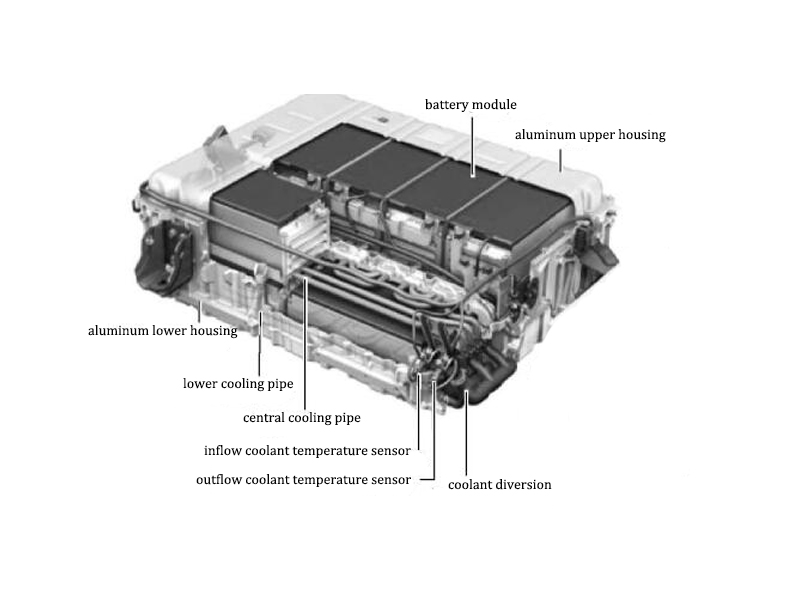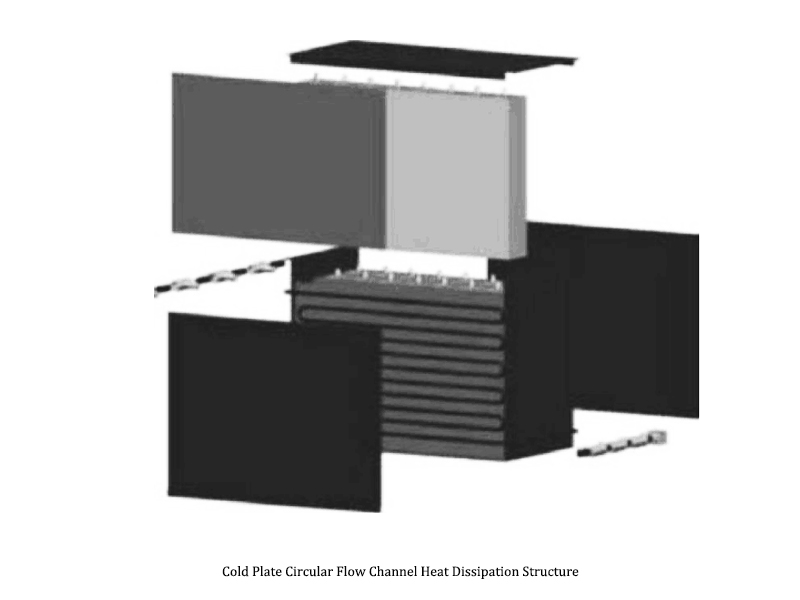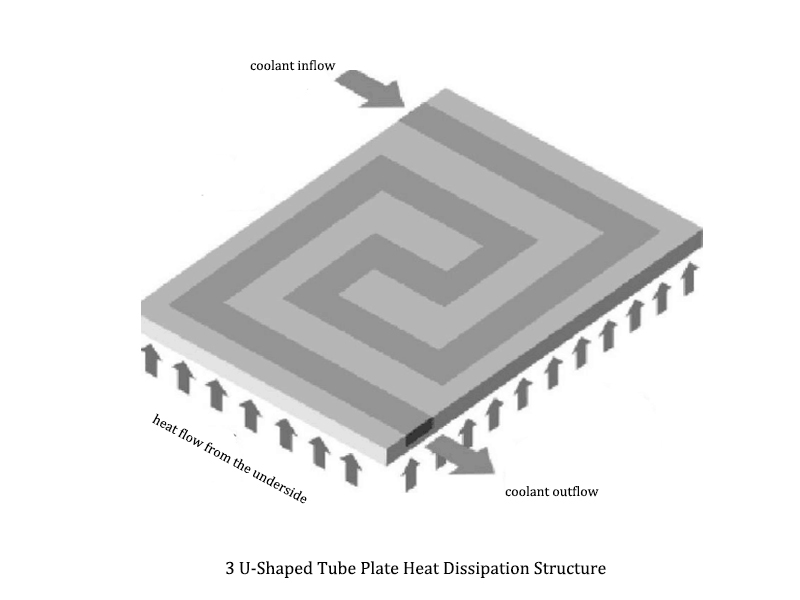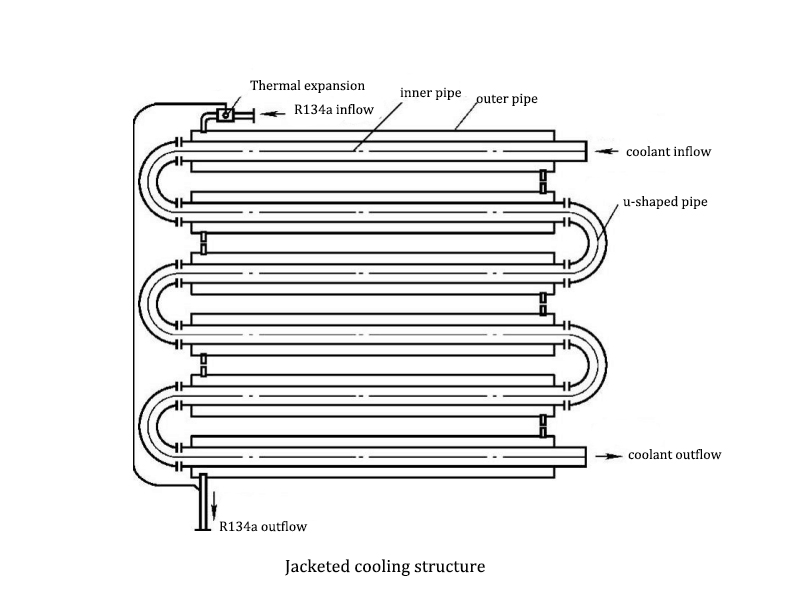The cooling system in new energy vehicles is crucial for ensuring stable operation. Its primary function is to dissipate the heat generated by the engine, keeping it within the appropriate temperature range and preventing damage to the motor, battery, and other components due to overheating.
Electric vehicle cooling systems can be categorized into active and passive cooling based on their sensitivity to external environmental conditions. Passive cooling relies on natural air intake for heat dissipation, which is limited by environmental factors and can only partially cool the battery. In contrast, active cooling overcomes these environmental limitations, maintaining an optimal working temperature for the battery. This makes active cooling a preferred design trend for the future.
Active cooling methods include forced air cooling, liquid cooling, and phase change material cooling. This paper focuses on liquid cooling, a prominent active cooling method for electric vehicles.
1. Working Principle of Liquid Cooling Systems
As the specific energy of power batteries increases, the demand for efficient cooling during high-rate discharges also rises. Air cooling systems require higher airflow to cool the battery pack, which results in significant noise and increased power consumption by the fan. Additionally, air cooling becomes less effective in high-temperature environments, making it unsuitable for modern electric vehicles.
In contrast, liquid cooling systems provide a more efficient solution. When a fluid flows over a solid surface, the fluid's speed decreases as it gets closer to the surface, becoming nearly stagnant at the immediate contact point. At this proximity, heat transfer occurs primarily through conduction. For example, water has a thermal conductivity dozens of times greater than air at room temperature and a specific heat capacity 4 times that of air. Therefore, researchers generally agree that liquid cooling offers better heat transfer capabilities than air cooling, making it more suitable for meeting the temperature control needs of power batteries.
Liquid flow heat transfer is a thermal management method that uses a liquid with high thermal conductivity to remove heat from the battery, either through direct or indirect contact. In the structural design, the battery can either be immersed directly in a high-insulation, high-thermal-conductivity liquid or be in contact with a cold plate. In the latter case, heat from the battery pack is transferred to the cold plate, which then removes the heat through heat exchange with the liquid.The direct immersion method typically uses silicon-based oils, mineral oils, and other organic oils. These liquids often have high viscosity and limited fluidity. The cold plate method uses media such as water, glycol, or a glycol-water mixture. These fluids have strong fluidity and a high heat transfer coefficient. However, they are not electrically insulating and must be carefully sealed to prevent leaks that could cause short circuits.

2. Research Status of Liquid Cooling Systems
2.1 Cold Plate Active Liquid Cooling Heat Dissipation
What are the effects of cold plate structural parameters and usage conditions on heat dissipation performance? Studies have found that wavy cold plates provide the best heat dissipation. Cold plates with high thermal conductivity perform better in heat dissipation compared to those with low thermal conductivity. Additionally, the heat removed by the battery through forced convection with the external environment is significantly less than the heat removed by the cold plate.
2.2 Cold Plate Circular Flow Channel Heat Dissipation Structure
Optimal sampling methods were used to extract various internal structures, with channel location and channel width as variables. Fluid simulation software analyzed the pressure drop of the cold plate and the average temperature and variance of the cooling target. The results indicate that wider channels result in a lower average temperature and pressure drop of the cold plate. Additionally, it was concluded that a design featuring gradually widening flow channels can effectively improve the consistency of battery temperature.

2.3 U-Shaped Tube Plate Heat Dissipation Structure
The effects of different inlet and outlet positions, pipe diameters, and the arrangement distances between pipes on heat dissipation were studied using a U-shaped tube plate heat dissipation structure and CFD software. The inlet speed and temperature were jointly optimized using ISIGHT. The results show that, with the optimal combination, the temperature difference is controlled to within 2.6°C.

2.4 Single-Phase Convection Structure
This structure uses water as a medium to dissipate heat. Compared to air cooling, this model can reduce the maximum temperature by 6°C. Additionally, as the thermal conductivity of water increases, the maximum temperature decreases further, providing a theoretical reference for using conventional liquids in battery heat dissipation.
2.5 Shunt S-Channel Heat Dissipation Structure
COMSOL software was used to simulate the temperature distribution characteristics of a lithium-ion battery cell under different conditions. The temperature field of the lithium-ion battery pack with different heat dissipation channels was then simulated. The results showed that the shunt S-shaped flow channel provided superior heat dissipation, as illustrated in Figure.

2.6 Jacketed cooling structure
The jacketed cooling structure has good cooling effect and simple structure, while ensuring the consistency of battery temperature and improving the power performance of electric vehicles.

3.END
The cooling system of new energy vehicles (NEVs) differs significantly from that of traditional cars. In NEVs, the primary power sources are the electric motor and battery, rather than the internal combustion engine found in traditional vehicles. Consequently, the cooling systems in NEVs require unique designs and configurations to meet the specific needs of electric motors and batteries.
Lori’s liquid cold plates’ advantages
Lori is a manufacturer that provides one-stop thermal solution services. Our professional thermal design team can offer a wide range of thermal management solutions. Lori supports you through the entire heat dissipation process, from initial drawings to final production. We provide a one-stop solution to meet all your thermal management needs.The reasons why you choose Lori as followings:
1.New choice of battery cold plate
Lori power battery liquid cold plate, designed for all kinds of power systems, no matter what kind of model, we have suitable cold plate specifications.
2.Reasonable and rich thermal solutions design, stable performance
Professional heat dissipation designs ensures optimal battery pack operation and extends battery life.
3.Cooling performance, optimization and re-optimization
Maximum contact area with the battery/module ensures maximum cooling performance and more accurate battery temperature control.
4.Ultra-thin design, no loss of performance
The average thickness is <8 mm while maintaining the flatness <0.5mm, lightweight and efficient.
5.Cost optimization, cost-effective choice
Integrated piping and brazing processes combine for lower cost, better performance and true value maximization.
6.Integration worry-free, easy to get started
The design is compact and easy to integrate into the battery pack, saving you more time and effort.
Choose Lori, choose free from worry! Let our power battery liquid cold plate escort your electric vehicle!










